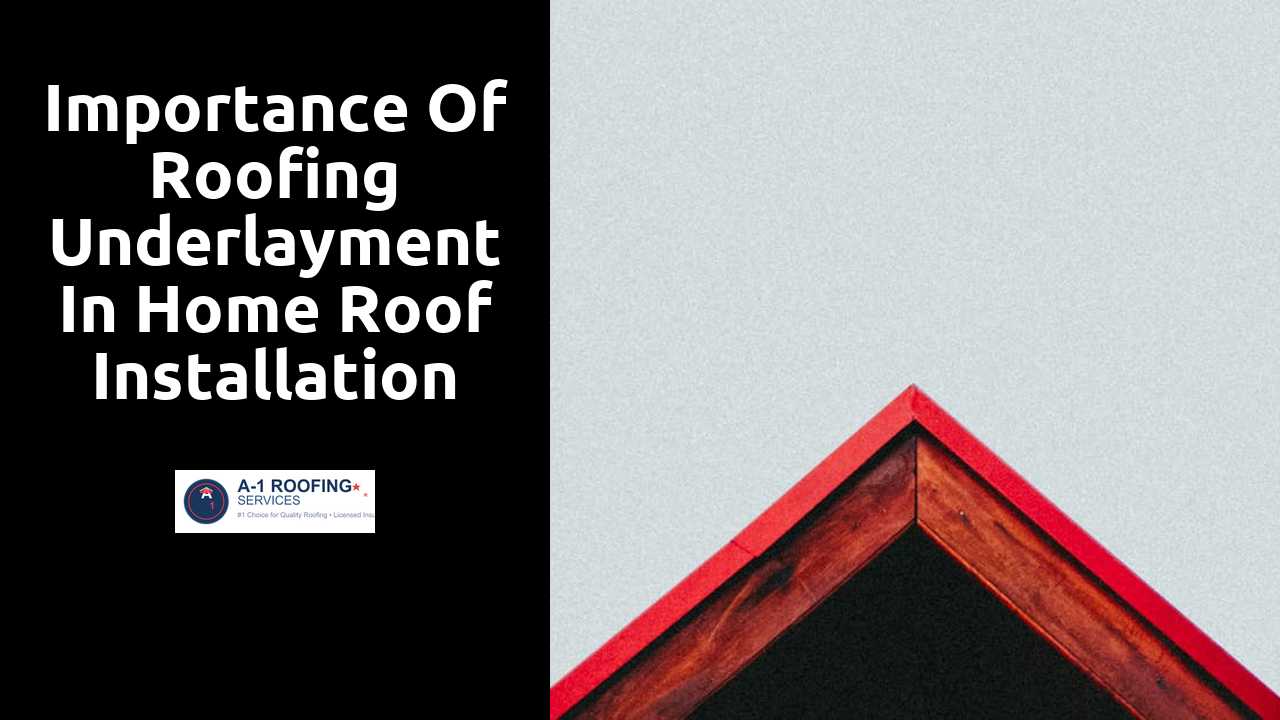
Importance of Roofing Underlayment in Home Roof Installation
Table Of Contents
Impact of Weather on Underlayment Choices
Weather conditions play a critical role in determining the type of roofing underlayment that is most suitable for a home. Regions exposed to heavy rainfall often require a more water-resistant material to safeguard against leaks and moisture buildup. In contrast, areas prone to extreme heat might benefit from underlayment designed to reflect solar irradiation, thereby aiding in temperature regulation within the attic space.
Additionally, snow and ice can significantly impact the underlayment choice, especially in colder climates where ice dams frequently occur. A durable, thicker underlayment can provide an extra layer of protection against water infiltration resulting from melting snow. Homeowners must consider these factors when selecting underlayment material to ensure their roofs can withstand the specific environmental challenges they face.
This new blog post covers this topic in more detail.
Selecting the Right Material for Your Climate
Different climates pose unique challenges for roofing systems, making the selection of suitable underlayment essential. In areas prone to heavy rainfall, for instance, a water-resistant or waterproof material can significantly mitigate the risk of leaks. Conversely, in regions with extreme temperatures, an underlayment that can withstand both heat and cold will provide the necessary protection against the elements. The local weather patterns play a critical role in determining which material will offer the best performance and longevity.
Understanding the specific requirements of your climate helps in making informed choices. For coastal regions, underlayment options with additional resistance to salt and humidity are advantageous. In contrast, places with significant snowfall may benefit from thicker, insulated underlayment to add warmth beneath the roof. Homeowners should evaluate the overall performance characteristics of various materials while considering how they align with their local environmental conditions.
Longevity of Roofing Underlayment
The lifespan of roofing underlayment significantly impacts the overall durability and performance of a roof. Quality materials can withstand various environmental stressors, such as temperature fluctuations, moisture, and UV exposure. Most underlayment products are designed to last anywhere from 10 to 30 years, depending on the specific material and installation conditions. Homeowners should consider the manufacturer’s warranty as a guideline for longevity.
Several factors influence the durability of roofing underlayment beyond just the material used. Proper installation plays a crucial role in ensuring that the underlayment performs effectively over time. Additionally, the local climate can cause variations in wear and tear. Regions with extreme temperatures or heavy rainfall may see a reduced lifespan for certain types of underlayment. Therefore, evaluating both material quality and installation practices is essential for maximizing longevity.
Factors That Affect Durability
Several factors significantly contribute to the durability of roofing underlayment. The material composition plays a crucial role; synthetic underlayments often outperform traditional felt when exposed to extreme weather conditions. Additionally, the thickness of the underlayment can impact its ability to withstand physical wear and tear. Underlayments with reinforced designs tend to resist tearing and puncturing better, offering increased longevity.
Installation methods are also vital for ensuring the durability of roof underlayment. Proper alignment and secure attachments prevent issues like water infiltration, which can lead to premature degradation. Environmental factors, such as exposure to ultraviolet rays and fluctuating temperatures, can further influence how long an underlayment lasts. Regular inspections may also identify potential problems before they escalate, thus maintaining the integrity of both the underlayment and the roof it protects.
Cost Considerations
When budgeting for roofing underlayment, it’s essential to understand that the quality of materials directly influences overall performance and longevity. Higher-grade underlayment may come with a larger upfront cost but could save homeowners money in the long run by reducing repair and replacement needs. Cheaper options can lead to increased vulnerability to weather damage, requiring frequent maintenance or total replacement sooner than expected. Evaluating the long-term benefits against initial expenses can help make a more informed decision.
Additionally, regional price differences can affect the overall cost of underlayment materials. Local climate conditions may necessitate specific types of underlayment, and certain regions might have limited availability of high-quality options. It's wise to consult with local roofing contractors to determine which materials not only fit the budget but also satisfy the demands of the local environment. Factoring in these elements can lead to a more effective and financially sound roofing project.
Budgeting for Quality Underlayment
Investing in quality roofing underlayment can have long-term financial benefits. While it might be tempting to cut costs during the roofing installation process, using cheaper materials often leads to increased repair expenses down the line. High-quality underlayment provides better protection against moisture and temperature fluctuations, which can ultimately extend the lifespan of the roof itself. This initial investment can save homeowners from future headaches, both in terms of repairs and potential issues related to water damage.
When budgeting for underlayment, it is essential to consider various factors beyond just the material cost. Installation expenses, warranty options, and the specific climate conditions in your area all influence the overall budget. Homeowners should weigh these factors carefully and seek recommendations from roofing professionals to ensure that they select an underlayment that offers the best balance of quality and affordability. A well-planned budget can facilitate the selection of the right materials that will provide optimal protection and performance.
Related Links
Best Practices for Flashing Installation in Residential RoofsImpact of Weather Conditions on Roof Installation